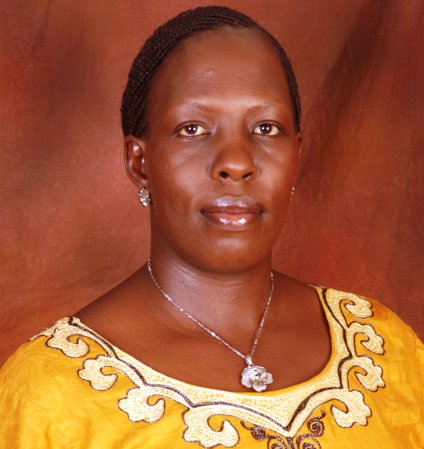10 Ways to Help Girls Transform The World
Crowd sourced solutions for girls’ access to education.
In our recent digital action campaign, World Pulse asked our community to share their testimonies on the obstacles that stand in the way of girls' dreams. Grassroots voices from all over the world chimed in with lived experiences that illuminate the disturbing statistics: There are currently 66 million girls in the world that should be in school, but are not. Thirteen girls under age 18 will be married in the next 30 seconds. The number one cause of death for girls aged 15-19 is childbirth.
Out of more than 350 submissions from over 60 countries, an alternative vision for the future emerged: Global legions of girls confident in their creativity and wisdom; comfortable in their bodies and safe in their classrooms; ready to take on the world. Not only did campaign participants reveal what educated and empowered girls and women are capable of, these bold dreamers and grassroots practitioners charted how we can make this vision a reality. For the full report and more action steps download the Girls Transform the World Advocacy Package.
1) Give Her Someone She Can Look Up To
She might be a girl in Afghanistan whose parents refuse to send her to school. She might be a girl in the US who is subtly, but persistently discouraged from joining Science, Technology, Engineering, and Math (STEM) fields.
.jpg) She might be a girl from an ethnic minority who rarely sees someone who looks like her portrayed as a successful woman in the media. One thing these girls have in common is that a mentor could help her dream beyond her current reality and support her through the inevitable tough times. Positive role models were consistently cited throughout the stories as key to girls' later success.
She might be a girl from an ethnic minority who rarely sees someone who looks like her portrayed as a successful woman in the media. One thing these girls have in common is that a mentor could help her dream beyond her current reality and support her through the inevitable tough times. Positive role models were consistently cited throughout the stories as key to girls' later success.
"I want young girls to look up to the world’s greatest role models and to learn and evolve, to look adversity in the eye and say, 'Move over, buddy, I’m going to change the world!'" Kirthijay | India
2) Sex Education for Girls AND Boys

Pregnancy is a leading cause for girls around the world to drop out of school. Many of these dropouts are preventable and fueled by lack of access to information. From Swaziland to the Bronx, girls often receive negative, shaming messages about their bodies and sex—or no message at all. Sex education can give girls agency, while teaching boys at a young age to respect women and girls.
“I had to learn about my body and sex through experiences, many of which were not healthy or safe. There was a silence in my education around the topic.” LatiNegra | US
3) Don’t Let Her Period Hold Her Back
 UNICEF estimates that 10% of girls in Africa drop out of school due to menstruation-related causes. Inability to afford sanitary pads or tampons combines with shame, fear, and a dearth of information about puberty to push many girls in low-income communities out of school. Several campaign participants highlighted the need for improved sanitation facilities in schools and free access to sanitary products. From grassroots advocacy to teaching girls to craft reusable pads, World Pulse community members are leading this effort!
UNICEF estimates that 10% of girls in Africa drop out of school due to menstruation-related causes. Inability to afford sanitary pads or tampons combines with shame, fear, and a dearth of information about puberty to push many girls in low-income communities out of school. Several campaign participants highlighted the need for improved sanitation facilities in schools and free access to sanitary products. From grassroots advocacy to teaching girls to craft reusable pads, World Pulse community members are leading this effort!
“As an adolescent, the only material at my disposal for managing menstruation was toilet paper/tissue (though a health risk and unhygienic), nor could I boldly ask my mother for sanitary pads. It’s a taboo to discuss sexual issues with parents.” Ikirimat | Uganda
4) Fight Child Marriage
For 14 million girls under age 18 who get married every year,  dreams of an education are exchanged for a husband. In some places child marriage is legal. In others, the laws are ignored. That’s why World Pulse community members are fighting the issue on all fronts: pursuing legal bans on the practice, raising awareness, and providing incentives to keep girls in school.
dreams of an education are exchanged for a husband. In some places child marriage is legal. In others, the laws are ignored. That’s why World Pulse community members are fighting the issue on all fronts: pursuing legal bans on the practice, raising awareness, and providing incentives to keep girls in school.
"Child marriage is both a symptom and a cause of ongoing development challenges, as the practice further contributes to economic hardship, human rights violations, and under-investment in the educational and health care needs of children." Buumba Malambo | Zambia
5) Eliminate Hidden Costs
 In most of the world, primary education is free. However, there are often hidden costs like books and uniforms. For families who rely on children to help with agriculture and income generating activities or expect girls to stay home to help with chores, investing in educating girls can be a tough sell. Covering these hidden fees can help the whole family recognize the value of educating a girl.
In most of the world, primary education is free. However, there are often hidden costs like books and uniforms. For families who rely on children to help with agriculture and income generating activities or expect girls to stay home to help with chores, investing in educating girls can be a tough sell. Covering these hidden fees can help the whole family recognize the value of educating a girl.
"One day Piniju picked up an old piece of a writing board in the compound where she lived, put it on her head, and started running, following other pupils to school. She forced herself to school. It was this act of rebellion that caused her maternal aunt (whose children she cared for) to reluctantly register her at the government primary school in Bambalang. She was given just one school uniform that eventually got torn due to frequent washing. However, with her worn out uniform, bathroom slippers and a damaged bag (which her great grandmother picked up for her) she rocked her way to school with joy." Precious M | Cameroon
6) Nurture Local Wisdom
 "Shivering in the slight rain, Cheska was clutching her pencils,” writes Libudsuroy of the Philippines. When Libudsuroy asked why the 10-year-old girl was skipping class to protest a logging corporation, she replied, “Because I want to be a teacher. If we keep our forests, my father can gather firewood and wild honey, and he will have enough money to send me to school.” Like Cheska, many young girls know the obstacles that stand in their way and the many interdependent factors they will need to succeed. The type of education advocated throughout this campaign doesn’t come at the expense of girls’ inherent and inherited knowledge, but strengthens and builds on it.
"Shivering in the slight rain, Cheska was clutching her pencils,” writes Libudsuroy of the Philippines. When Libudsuroy asked why the 10-year-old girl was skipping class to protest a logging corporation, she replied, “Because I want to be a teacher. If we keep our forests, my father can gather firewood and wild honey, and he will have enough money to send me to school.” Like Cheska, many young girls know the obstacles that stand in their way and the many interdependent factors they will need to succeed. The type of education advocated throughout this campaign doesn’t come at the expense of girls’ inherent and inherited knowledge, but strengthens and builds on it.
“I suggest a girl-oriented education, one that brings about authentic empowerment. They can build a web-based women’s school of living traditions, nurturing their own heritage of songs, rituals, epics, crafts, games, genealogy; preserving in their mother tongue the names and uses of forest trees, medicinal herbs, wild animals. Online, they can discuss rights, family planning, and domestic violence. They can harness the interactive technology to network with other women indigenous peoples worldwide." Libudsuroy | Philippines
7) Make Learning Relevant & Empowering
.jpg) Education isn’t just what happens in a classroom. It includes empowerment through sports, arts, and anything that ignites a child’s inner fire. Around the world, we see community leaders tossing aside one-size-fits-all approaches to education to create new opportunities for girls to shine. Stacey Rozen of South Africa teaches girls how to create story scarves, equipping them with hands-on skills, while providing an outlet for creativity and positive messages.
Education isn’t just what happens in a classroom. It includes empowerment through sports, arts, and anything that ignites a child’s inner fire. Around the world, we see community leaders tossing aside one-size-fits-all approaches to education to create new opportunities for girls to shine. Stacey Rozen of South Africa teaches girls how to create story scarves, equipping them with hands-on skills, while providing an outlet for creativity and positive messages.
"The true purpose of education is to engage minds, in any way possible. For an educated girl with transferable hand skills coupled with self worth, bountiful possibilities await.” Stacey Rozen | South Africa
8) Meet Her Where She’s At
 Despie powerful efforts to educate families and shift cultural attitudes to value girls’ education, many girls have already slipped through the cracks. Innovative programs target girls who have already dropped out, or have faced interruptions in their schooling. Flexible solutions like online and distance learning accommodate students who are older or face unique life circumstances, and advance the goal of extending education and opportunity to ALL.
Despie powerful efforts to educate families and shift cultural attitudes to value girls’ education, many girls have already slipped through the cracks. Innovative programs target girls who have already dropped out, or have faced interruptions in their schooling. Flexible solutions like online and distance learning accommodate students who are older or face unique life circumstances, and advance the goal of extending education and opportunity to ALL.
"Our community is full of child-headed families, led by young girls, who are forced to take a parental role before their time. In the end their education suffers. Most of them never reach their potential." Gaok | Botswana
9) Make Our Homes, Schools, and Communities Safe Spaces
.jpg) Fear holds many girls back from education. There are girls in every region of the world who face sexual abuse from teachers and trusted adults. Others face abuse in the home that erodes their sense of worth and their performance in school. In conflict regions, there is violence and instability to contend with. By addressing root causes of violence, refusing to remain silent, and providing trusted spaces for girls to speak up and escape violence, we can give these girls a fighting chance at a future.
Fear holds many girls back from education. There are girls in every region of the world who face sexual abuse from teachers and trusted adults. Others face abuse in the home that erodes their sense of worth and their performance in school. In conflict regions, there is violence and instability to contend with. By addressing root causes of violence, refusing to remain silent, and providing trusted spaces for girls to speak up and escape violence, we can give these girls a fighting chance at a future.
"I wonder, what educational future will these girls have if they cannot be safe going to school?” Aya Chebbi | Tunisia
10) Begin With One Girl
 Not sure where to start? Think about the impact a single educated and empowered girl can make on her family, her country, and the world. Read some of the inspiring stories of women who benefited from investment in their education, and the heroic teachers, mentors, and community members who made their success possible.
Not sure where to start? Think about the impact a single educated and empowered girl can make on her family, her country, and the world. Read some of the inspiring stories of women who benefited from investment in their education, and the heroic teachers, mentors, and community members who made their success possible.
"We don't have to take on the impossible goal of creating a seed. All we need to do is plant it. Someone else can water it, another will fertilize, others can prune and soon enough we will all enjoy the fruits of this combined labor." Radiocami | US/Venezuela
This article originally appeared on World Pulse and is republished here with permission. Kim Crane is an Assistant Editor at World Pulse, a leading network using the power of digital media to connect women worldwide and bring them a global voice.
SHARE YOUR REFLECTION
5 Past Reflections


On Nov 15, 2013 Denise Attwood wrote:
We are currently raising money for scholarship incentives for families in Nepal to keep their girl children in school! It only takes $5 and we call our campaign the Power of 5. We are raising money to keep 180 girls in school for the next year. Many of these girls are the first to be educated in their families and we want to empower people here to know that it doesn't take much to stand beside them! To donate please go to http://www.indiegogo.com/pr... ! Thanks so much for the great article and spread the word!

On Nov 15, 2013 Kristin Pedemonti wrote:
Fantastic! Thank you for the inspiration and to recognizing the need to also educate Boys about how to treat and respect women. Kudos on an insightful sharing of ideas! Here's to Girls and Women becoming all they are meant to be! :) currently I am donating literacy workshops in Ghana for librarians, most of whom are women! We've been speaking a lot about empowering girls here! YAY!

On Nov 15, 2013 Martha Roberts wrote:
We fail to recognize that in nearly all societies males have far greater access to education-job training-sports-travel-et.al than most women. Certainly there are males who do not take advantage of this and are not 'egoists', however, even the most fortunate fail to recognize that their being a male grants them far more than being female…. THEY are believed far more than women when truth is sought… So, lets work for women and do our best to make our male children more aware of their privilege and how to share it.

On Nov 15, 2013 Harp wrote:
well, we educated a boy, and he does, in fact, contribute to community. not all men are egoists. how about we educate all children to be contributing and supporting members of community?


On Dec 9, 2013 Mary Jo Marick wrote:
I have limited income and means to help the girls described in this article. However, I do have four grand daughters, ages 25 through 5, who I mentor by setting a good example, as well as providing them with toys and materials to promote their diversity and strengths.
Post Your Reply